The NZXT S340 Case Review
by E. Fylladitakis on July 13, 2015 8:00 AM EST- Posted in
- Cases/Cooling/PSUs
- NZXT
- Case
- ODD-Free
The Interior of the NZXT S340
With the side panels removed, we can admire the smooth matte black interior of the S340. The glossy white paint that covers the case’s exterior is sprayed only on the rear frame and the metallic cable cover.
The first thing of particular note about the S340 is the metallic cover that separates the PSU compartment and the rest of the system. Unlike the vast majority of designs, it is part of the frame and cannot be removed. This enhances the mechanical strength of the case but it somewhat limits its flexibility and ease of use. An asymmetric opening on the motherboard tray allows for the installation of advanced cooling solutions with the motherboard still inside the case.
Instead of opening several holes and covering them with grommets, NZXT cut open the entire right side of the motherboard tray and is using a single removable metallic cover for it. The downside is that the removable cover has all the cable ties on it and therefore it is very likely that they will have to be cut each time the cover needs to be removed. It also is somewhat flimsy and bends very easily, even with minimal stress, requiring from the user to bend it back in shape in order for the mounting holes to align when reinstalled.
Two 2.5” device trays are mounted at the bottom of the system compartment, on top of the black metal frame that separates the PSU compartment from the rest of the case. There are openings for the cables right in front of them, as well as another smaller opening to their right. Each tray is secured with a single thumbscrew. Large expansion cards installed at the lower slots of the motherboard will block access to these two trays, forcing the user to remove the card in order to access them. However, the S340 is not really the case of choice for tri-SLI systems, so it is highly unlikely that actual users will face this problem.
Only three 3.5” drives can fit in the S340. Two of them can be installed in the small cage at the front of the PSU compartment, near the bottom of the case. This cage is not removable. The third one can fit under this compartment, bolted directly to the bottom frame of the case. The removal of the faceplate is necessary in order to secure the drives in the cage, as the screws are inserted from the front of the case. For the third drive, the user has to flip the case to its side, as the holes are at the bottom of the case.
There is no active cooling directly aimed at the 3.5" drives, which rely on the semi-passive airflow of air that will enter from the front of the case through the vents at the top of the drive's cage and out of the case via the exhaust fans. This setup depends on negative pressure airflow and can cause performance issues if a radiator or two intake fans are installed at the front of the case. With this design, the exhaust flow needs to be significantly stronger than the intake flow, otherwise the passive air intake through the vents will be far too low to offer the 3.5" devices reasonable cooling.
There are two stock fans installed in the S340, one 120 mm fan at the rear and another identical fan at the top of the case. Although either of these could be removed to give their place to liquid cooling radiators, there is little clearance between them and the motherboard, which will undoubtedly lead to compatibility issues (we have read that users cannot fit a H105 for that reason). That however will not be necessary as two intake fans or up to a 240/280 mm liquid cooling radiator can be installed at the front of the case, where plenty of room is provided. It remains strange why NZXT installed a 120 mm fan at the top of the S340, where a 140 mm can fit.
As we noticed in the previous page, the PSU compartment is located at the lower rear side of the case, where a cover is held in place with four thumbscrews. Removing the cover and inserting the PSU from the rear of the case is the only way possible to install it in the S340, as it will not fit from the side. Once inserted, the PSU sits directly on metal impressions of the bottom chassis panel. Theoretically, a PSU of any length can fit inside the S340 but we strongly recommend not to install a unit longer than 180 mm, otherwise cable management could become very difficult.
For the means of this review, we installed a Corsair AX760i with the red cable set, for strong visual contrast. It fits without issues inside the NZXT S340 and the cables are long enough for a standard system. Individually sleeved cables however are stiff and are not ideal for the design of the S340 as the metallic cable management cover requires the cables to take sharp turns. Due to the narrow spaces and sharp turns, stiff cables place excessive stress on the connectors and are difficult to manage.
The system area of the NZXT S340 is large enough for a standard ATX system to fit comfortably. Aside from the large opening at the right of the motherboard tray, several other small openings help with the routing of cables between the compartments through the right side of the case. Without fans or a liquid cooling radiator, cards up to 35 cm can easily fit inside the S340. It is possible to calculate how much clearance is left for the cards after fans or a radiator is installed though. The total clearance to the front of the case is 36.4 cm, therefore the thickness of a radiator or the fans can be simply subtracted from this length. For example, if a 3 cm thick radiator with 2.5 cm thick fans is installed, that reduces the available clearance down to 36.4 - 3 - 2.5 = 30.9 cm.
The cards are held in place using thumbscrews, inserted from the rear of the case. Usually, designs that employ the securing of cards from the rear of the case also have covers to shield the opening and the screws. This is not the case with the S340, where a fairly large permanent opening is present next to the expansion slots and the thumbscrews are always accessible from the outside of the case.


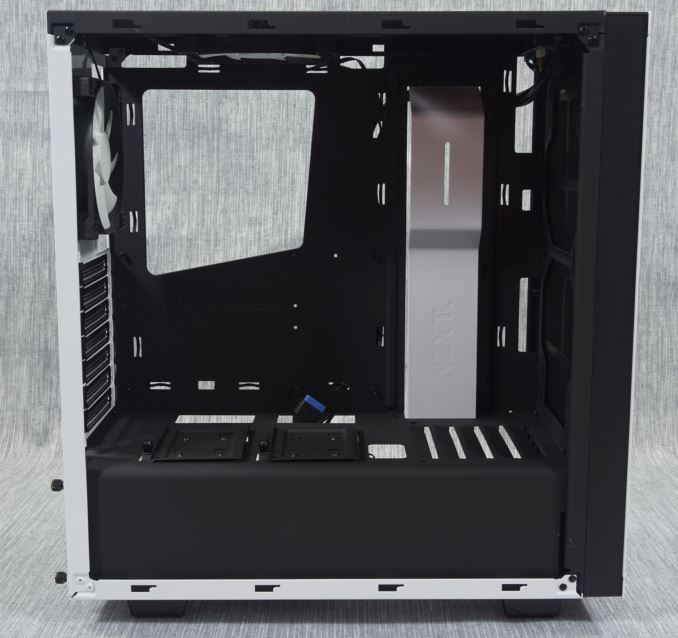
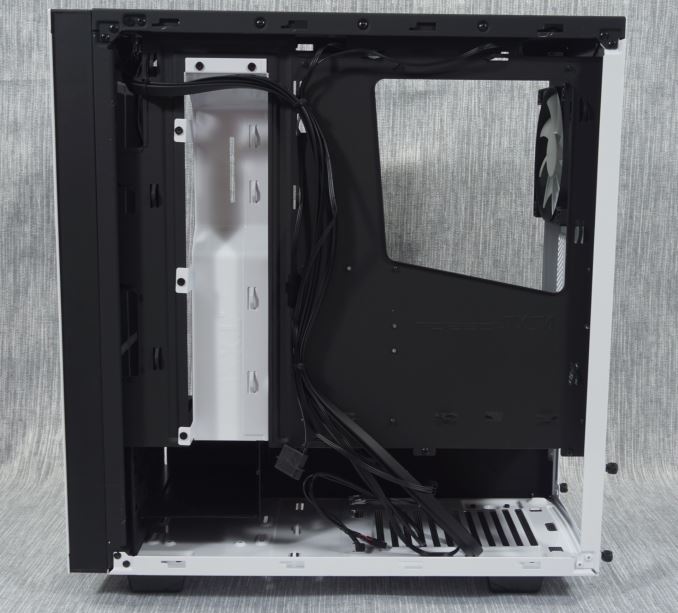
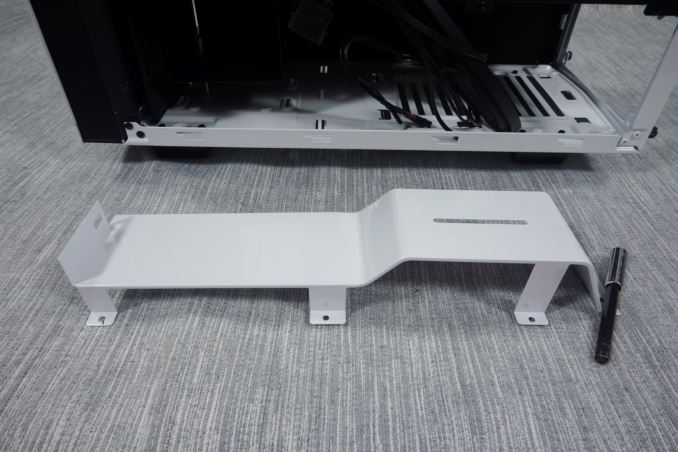
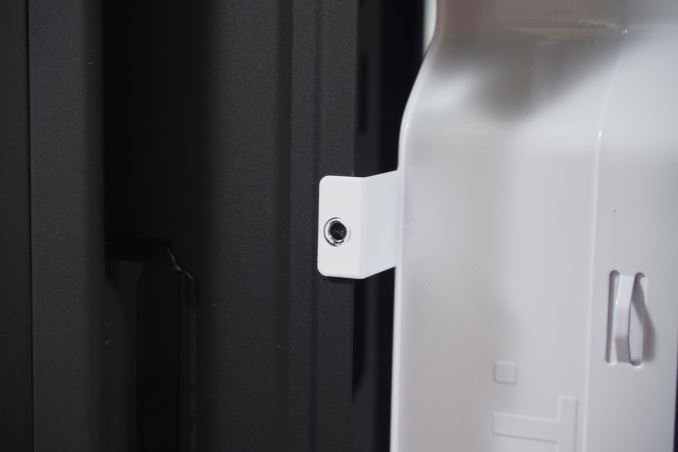
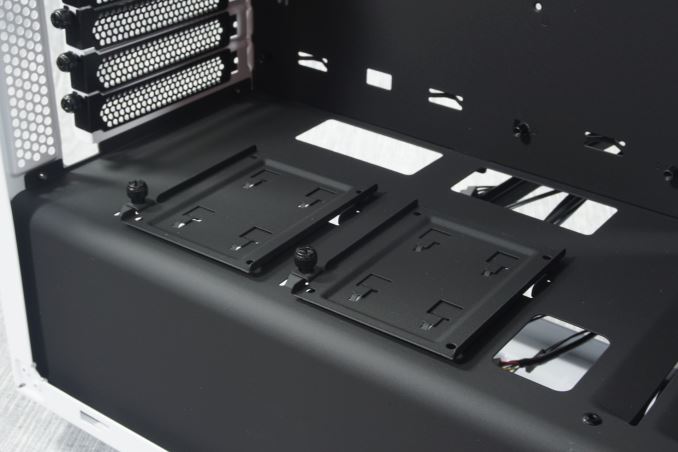

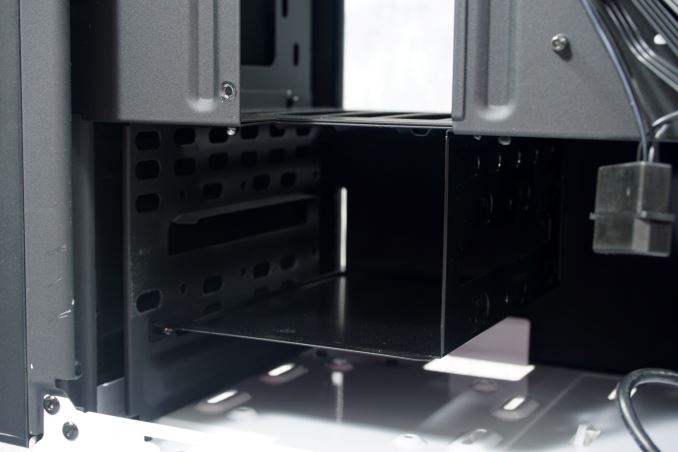
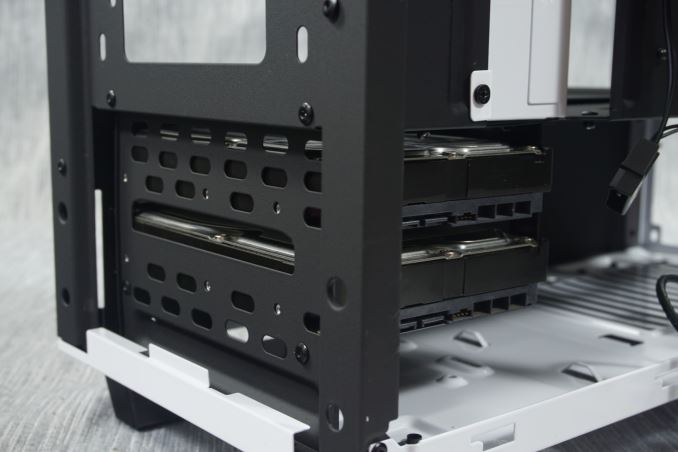
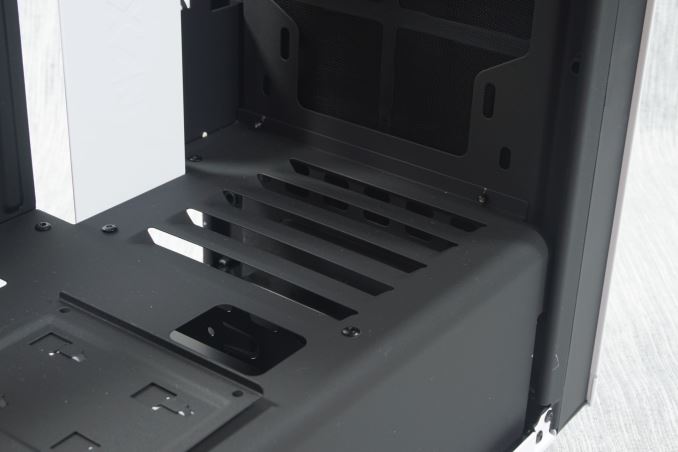
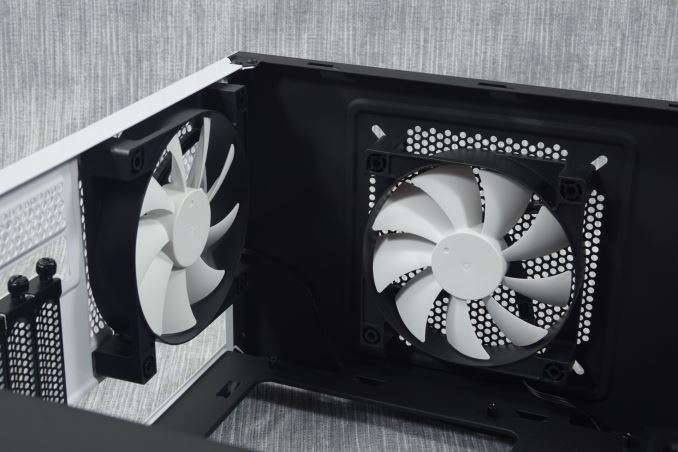
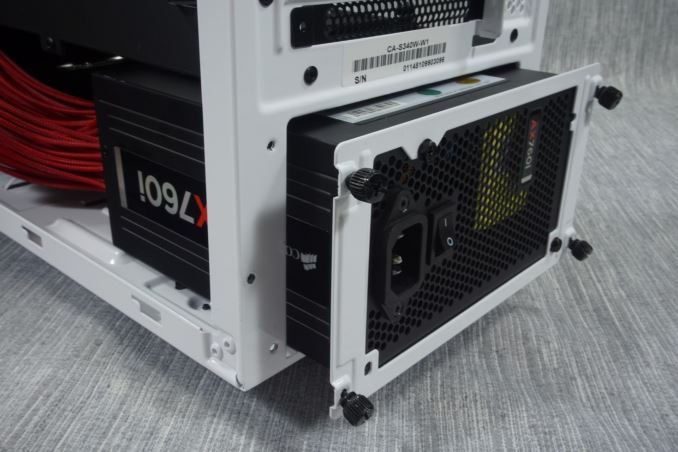
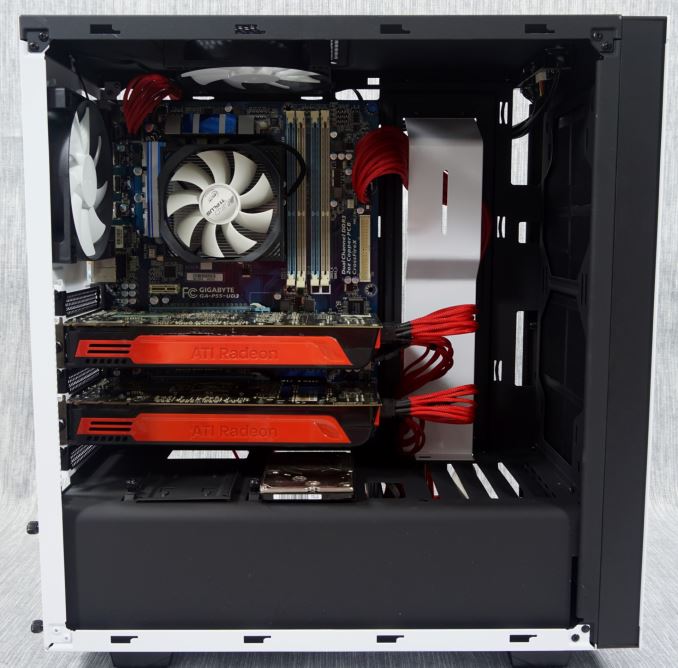
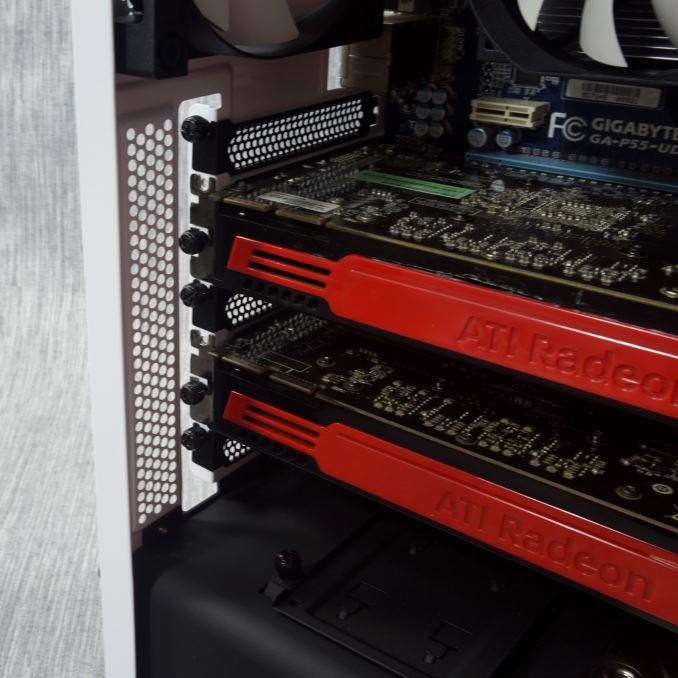








48 Comments
View All Comments
zepi - Monday, July 13, 2015 - link
Why are these cases so huge in terms of depth? I'd think that removal of 5.25" and 3.5" bays would allow for much more compat case designs.Shadow7037932 - Monday, July 13, 2015 - link
Depth in which direction? If you're talking about making the case thinner sideways, then the reason is because people want to put large tower heatsinks.zepi - Monday, July 13, 2015 - link
Depth in terms of measure from front to back.Shadow7037932 - Monday, July 13, 2015 - link
To fit larger longer GPUs and radiators.mr_tawan - Monday, July 13, 2015 - link
It's for 240mm radiator.Haravikk - Monday, July 13, 2015 - link
Do we really need a 36cm deep case to fit a 240mm radiator? The 90º folds in the chassis should be able to support holes for mounting a radiator, so a depth of 26cm ought to be plenty, for GPU compatibility 30cm probably makes sense (with the PCI brackets extending out the back).I suppose the same question can be asked of why not a Mini ITX motherboard though; it's rare to see anyone actually needing more than one PCIe slot, as IMO it's usually better to just get a single card and upgrade it later, as multi-card setups are almost always disappointing.
I do wish we'd get away from the longer cards actually, as there are too few good half-length offerings, though the 960 from Nvidia and the new Nano from AMD seem like good options. What we really need are more shorter cards with liquid cooling integrated, as it really opens up the possibilities for smaller systems.
niva - Monday, July 13, 2015 - link
Your points are all valid, but in general I feel desktops should keep their size. Laptops and tablets, even cell phones are taking over in terms of compact computing. The charm of the desktop is that it still has the big bays for DVDs and hard drives and giant radiators/fans.Pretty soon we should be able to get rid of the big optical drives though, they're already on the way out. The mass storage devices can be relocated and overall I agree with your suggestions.
I also find multi GPU setups not worth the risk and cost, prefer to get a high end card and keep it for a few years. The large cards are difficult to fit in all cases.
powerwiz - Tuesday, July 14, 2015 - link
What risks are you talking about in terms of mutli GPU set up. Its rather simple and with say the Nvidia 900 series cards your talking about almost half of the power consumption of previous generation cards. I have a MSI 980 GTX SLI set up it was cake to put in. On top of that the cards are near silent in everyday computing. Even with games running max its still pretty quite compared to cards of the past.Also this case was never geared towards you its geared towards a computer enthusiast. I recently built a monster gaming rig using the NZXT H440. While it looks somewhat traditional it lacks all bays for various legacy drives. Internally its been covereted into HDD/SSD slots.
Also if you do not like this case there is a tremendous selection of many other slim cases, micro cases etc.
Kepe - Monday, July 13, 2015 - link
"it's rare to see anyone actually needing more than one PCIe slot"I have a GPU, PCIe SSD and a PCIe sound card. No way I'd manage with just one PCIe slot. Mini ITX lacks expandability. You buy a new Mini ITX system and are happy with it for a while. Then you start thinking about some additions, like a sound card with a headphone amp or a super-fast SSD for games or whatever. Later on your GPU starts lagging behind in the newest games and you think it would be a cheaper upgrade to get a second GPU for SLI on CrossFire. But you can't get anything because your only PCIe slot is taken by the GPU. Mini ITX also lacks the space for M.2 SSDs and often comes with less DDR memory slots than ATX mobos. Even adding memory means you have to buy a new kit with more RAM per stick, instead of just getting two extra sticks to accompany the original ones.
Mini ITX is ok if you want a small, portable system for LAN parties. Also for basic users who don't know anything about upgrading their systems with more stuff. But IMHO, for a "power user" who doesn't want to buy a new system every time he wants to upgrade something, it just isn't enough.
romrunning - Monday, July 13, 2015 - link
You make a bad generalization about mini-ITX cases and the expertise of those who build them. Mini-ITX builders know very well the trade-offs inherent with the smaller footprint. Those storage items you cite (SSD, M.2 SSD) can easily be added to mini-ITX systems, including M.2 as long as the motherboard supports it. Other limitations you quote (2nd GPU, more than two RAM slots) are understood by mini-ITX builders. They also understand you can add external peripherals as well, like an external sound card.When I built my own mini-ITX system, I knew exactly what I wanted. I also knew that if I really wanted to get two GPUs later, I would need a different case. I didn't want a hulking tower case that could fit 3 GPUs and a ton of fans. I was perfectly fine with the GPU I spec'ed out, the SFX PSU needed to support that GPU, the 2 x 8GB DDR, and the SSD I wanted.
If anything, I would say mini-ITX builders have to be more discerning in understanding what they want because of the design constraints of the smaller footprint.